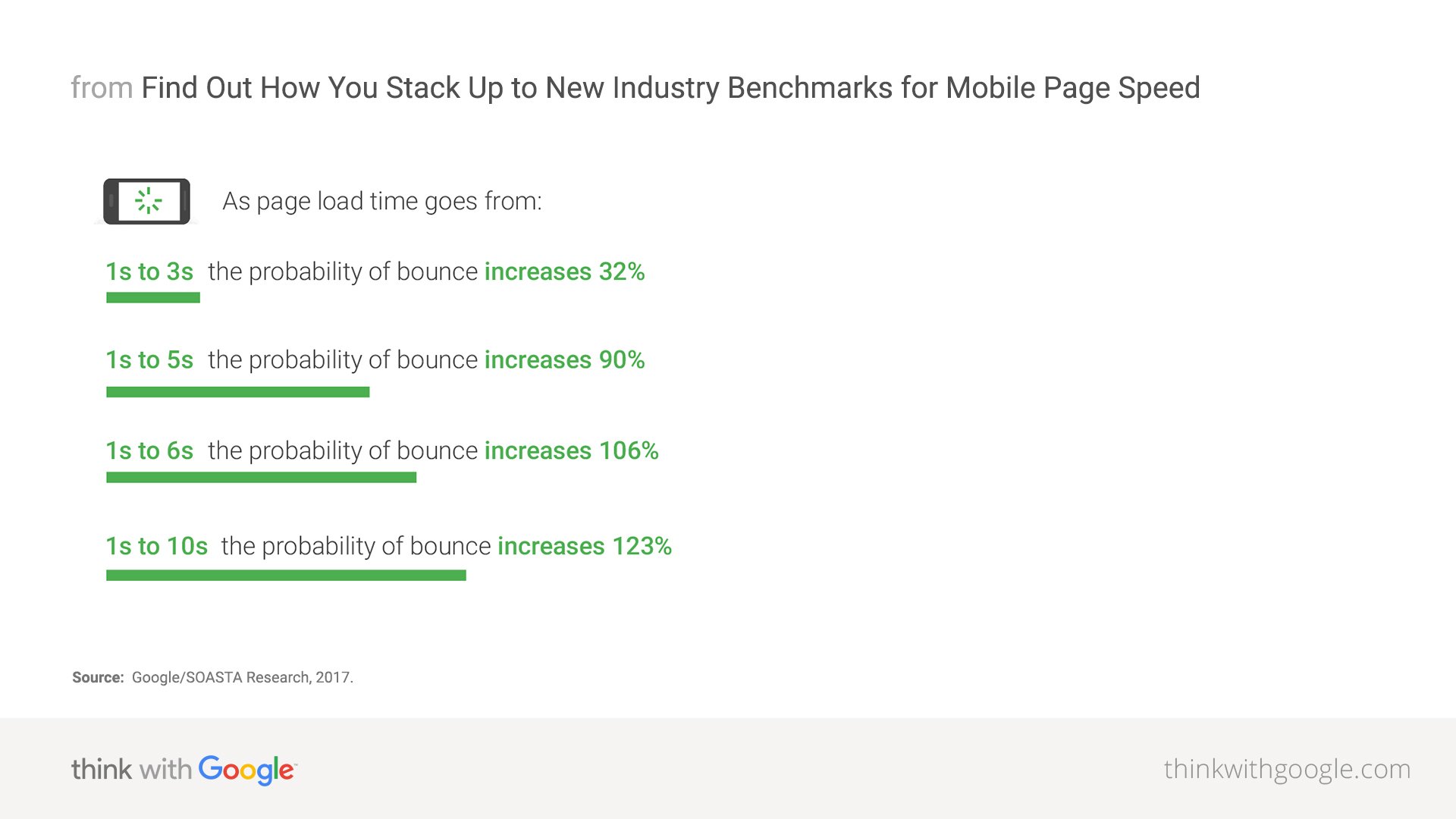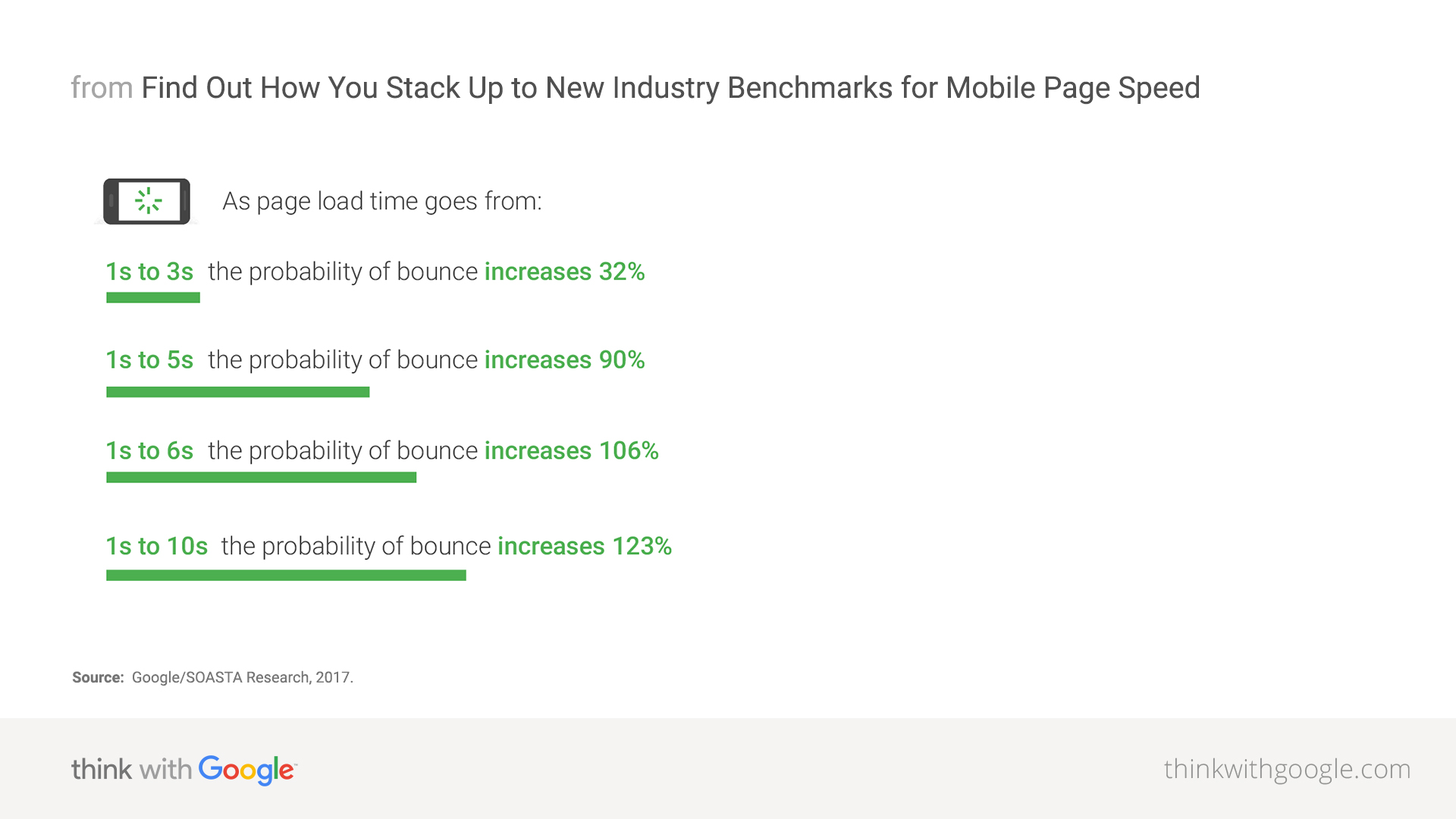In July of 2018, Google will use a new ranking signal focused purely on mobile site speed: the “Speed Update.” Google will dampen rankings for slower mobile sites to help mobile searchers find sites that deliver what Google considers to be a better mobile experience. Google says the Speed Update “will only affect pages that deliver the slowest experience to users and will only affect a small percentage of queries.” Shoppers Expect Speed To underscore the importance of speed, the search giant trotted out some eye-opening statistics. For example, Google’s research shows that as page load time increases from 1 to 10 seconds, the probability of the visitor bouncing out of the site increases 123 percent. — Another dataset shows the average retail site in the U.S. takes 9.8 seconds to load. It’s time to focus on the speed of your mobile experience. Google recommends these tools to help optimize and test page speed: Chrome User Experience Report, a public dataset of key user experience metrics for popular destinations on the web, as experienced by Chrome users under real-world conditions. Lighthouse, an automated tool for auditing the quality of web pages (performance, accessibility, and more). Mobile-first Indexing The Speed Update isn’t Google’s only mobile search initiative. This year should also see Google’s increasing application of its mobile-first index, which will determine overall rankings based on mobile factors, not desktop. Instead, Google has used desktop sites to determine rankings and then applied only mobile ranking “signals.” Google has used other factors for mobile-specific searches, such as the user experience issues in the mobile-friendly update.
If you weren’t already focused on your mobile site’s performance, Google is giving you a reason. In July of 2018, Google will use a new ranking signal focused purely on mobile site speed: the “Speed Update.”
Google will dampen rankings for slower mobile sites to help mobile searchers find sites that deliver what Google considers to be a better mobile experience.
Desktop site speed has been a Google ranking factor for almost eight years — its obsession with speed isn’t anything new. What is new is that Google will now include mobile sites in the site speed ranking equation.
Google will use the Speed Update to measure all mobile pages, whether they’re on a dedicated or a responsive site. (However, the Speed Update, reportedly, will be a smaller ranking factor than contextual relevance to the searcher’s query.) Google says the Speed Update “will only affect pages that deliver the slowest experience to users and will only affect a small percentage of queries.”
Shoppers Expect Speed
To underscore the importance of speed, the search giant trotted out some eye-opening statistics. For example, Google’s research shows that as page load time increases from 1 to 10 seconds, the probability of the visitor bouncing out of the site increases 123 percent.

…

COMMENTS